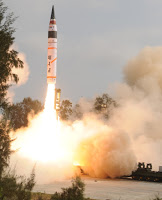The Pentagon notified the US Congress on Thursday of a proposed
contract with Japan worth nearly $1 billion to upgrade the country's
early warning radar aircraft.
 The planned $950 million deal would modernize Japan's fleet of four
Airborne Warning and Control System (AWACS) planes, bolstering
electronic systems used to identify other aircraft and providing new
cryptographic computers, the Defense Security Cooperation Agency said.
The planned $950 million deal would modernize Japan's fleet of four
Airborne Warning and Control System (AWACS) planes, bolstering
electronic systems used to identify other aircraft and providing new
cryptographic computers, the Defense Security Cooperation Agency said.
"The proposed sale will provide Japan with an upgraded AWACS command and control capability" and "allow Japan's AWACS fleet to be more compatible with the US Air Force AWACS fleet baseline," according to an agency statement.
Manufactured by aerospace giant Boeing and flown by NATO countries and other US allies, AWACS carry a rotating radar antenna mounted on the back of the plane, using systems to track other aircraft or enemy air defenses at long distances.
 The planned $950 million deal would modernize Japan's fleet of four
Airborne Warning and Control System (AWACS) planes, bolstering
electronic systems used to identify other aircraft and providing new
cryptographic computers, the Defense Security Cooperation Agency said.
The planned $950 million deal would modernize Japan's fleet of four
Airborne Warning and Control System (AWACS) planes, bolstering
electronic systems used to identify other aircraft and providing new
cryptographic computers, the Defense Security Cooperation Agency said."The proposed sale will provide Japan with an upgraded AWACS command and control capability" and "allow Japan's AWACS fleet to be more compatible with the US Air Force AWACS fleet baseline," according to an agency statement.
Manufactured by aerospace giant Boeing and flown by NATO countries and other US allies, AWACS carry a rotating radar antenna mounted on the back of the plane, using systems to track other aircraft or enemy air defenses at long distances.





















.jpg)





















